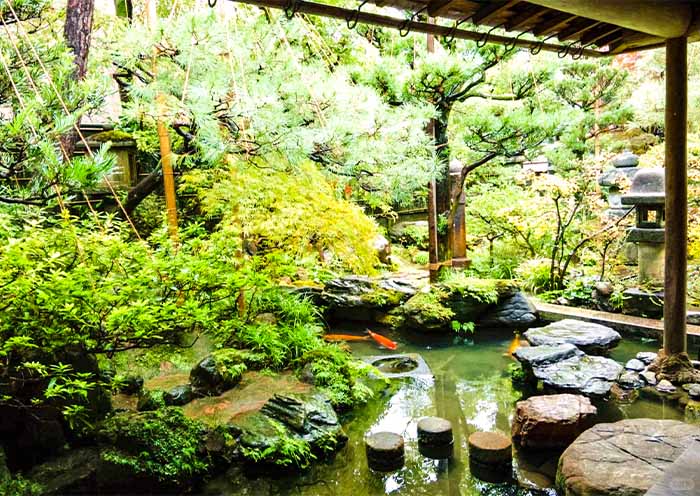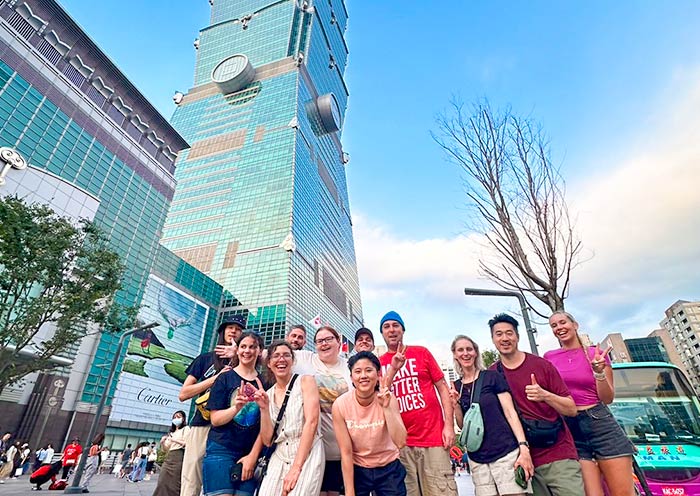12-Day Japan Tour for Family with Central Japan (Tokyo Kyoto Osaka)
From
USD request![]()
- This is the price per person, based on a group of 6 people, 4-star hotel accommodation, and travel during the regular season.
- Early-bird rates apply to bookings made at least 6 months prior to the departure date.
- The price is subject to change depending on your travel season, group size, hotel class, and potential fluctuations in currency exchange rates.
- Highlights
- Itinerary
- Price
- Trip Notes
- Accommodation
- Photos
- Reviews
Trending Tokyo Osaka & Off-the-beaten-path Central Region
Children smile, seniors admire, and parents still find dreamy sights at a flexible pace. Our 12-Day Japan Tour for Family (Tokyo, Central Japan, Kyoto, Osaka) is worth it!
Take our 12-day Japan Family Tour Package with a local guide. In Tokyo, Disneyland and Akihabara will be enough to thrill your kids. Also, visit heritage sites like Senso-ji Temple, one of Japan's oldest temples, and admire Japan's iconic cultural and spiritual landmark, Mt. Fuji.
More relaxation to enjoy in the slow-paced central region. Cook Japanese home cuisine with your family, stroll Takayama's Edo-period streets, visit UNESCO Shirakawa-go. Rest at Kanazawa's Kenroku-en Garden and samurai districts.
Turn to Kyoto. Visit a World Heritage site like Kinkaku-ji Temple. Put on kimonos and stroll in Gion together. Come to Nara for adorable deer. Have a free day in Osaka for either USJ and shopping.
It's your worry-free Japan family tour! Pace, transportation, hotel, and language. All handled with ease. We'd love to serve your family at perfect rhythm. Contact us.
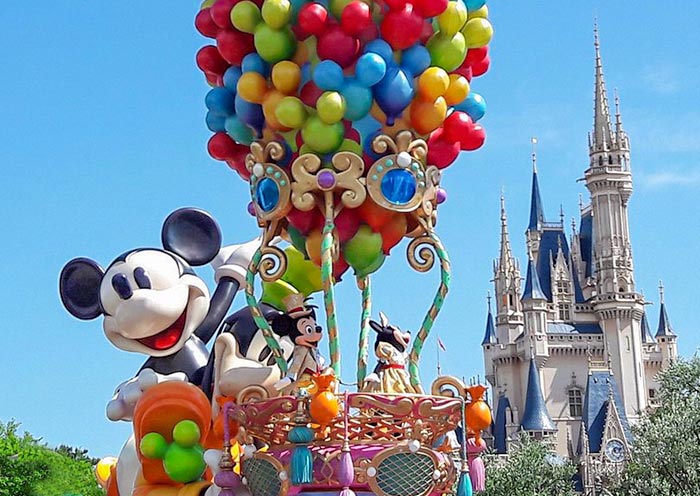

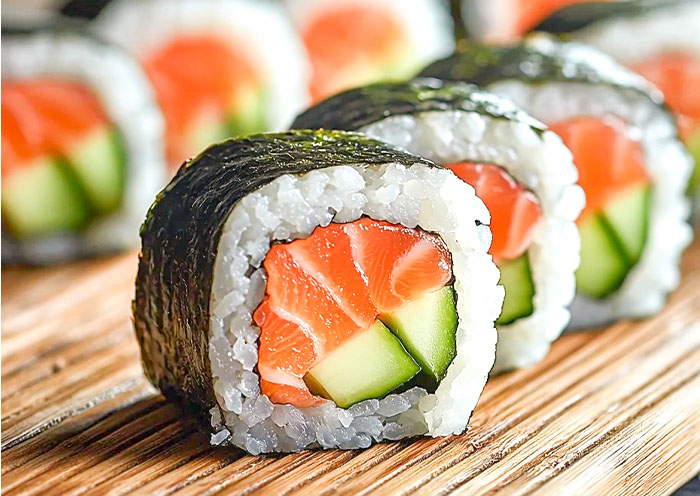
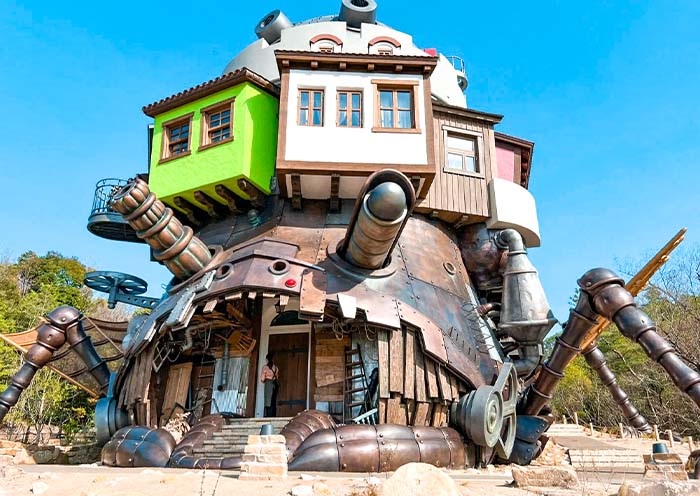
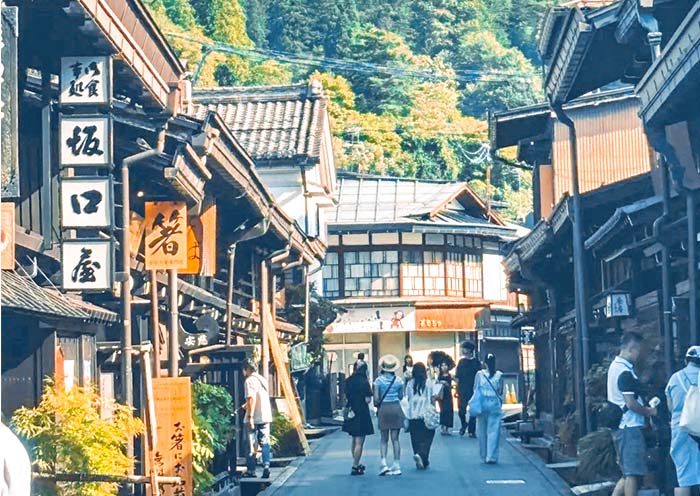


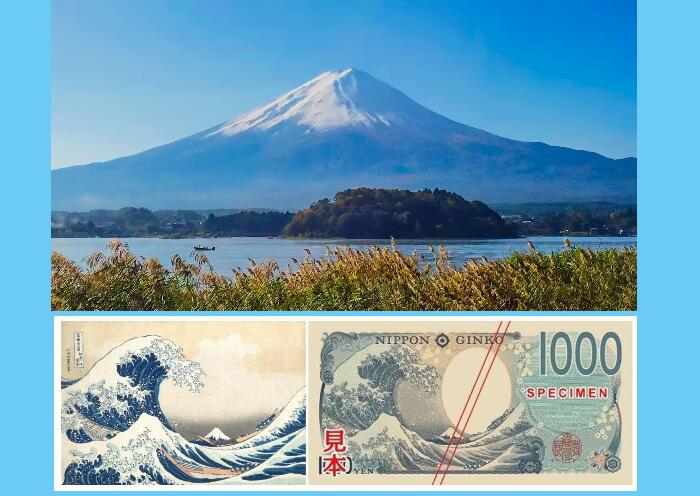

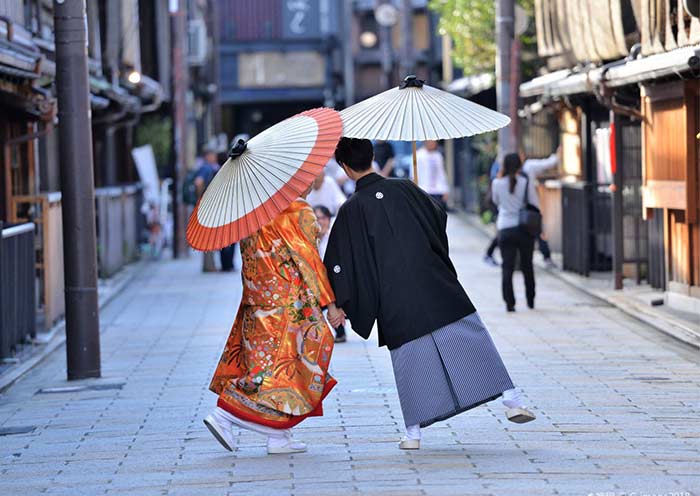
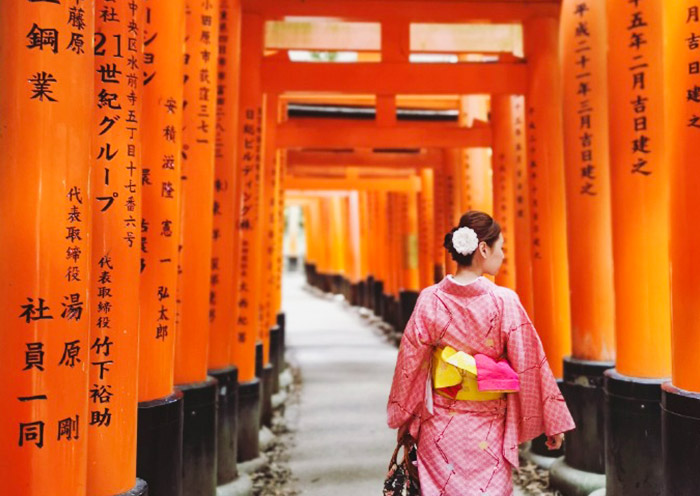

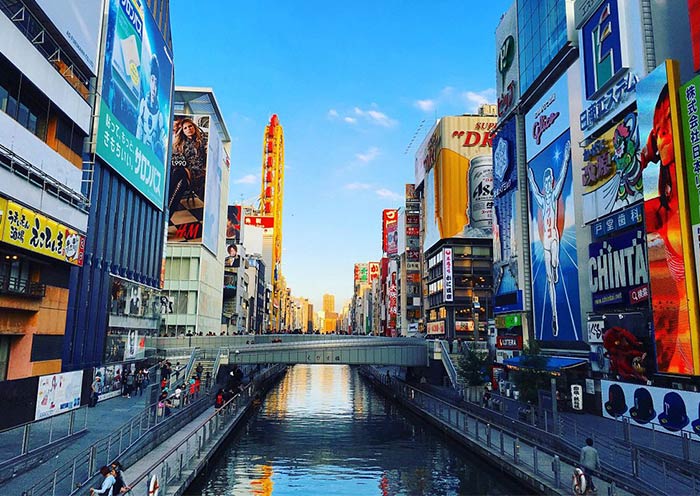
Itinerary at a Glance
Tokyo (3 Days)
Ueno Park & Zoo, Shibuya Crossing, Senso-ji Temple (Asakusa Kannon Temple), Akihabara, Tsukiji Outer Market (Tsukiji Fish Market), Tokyo Disneyland & DisneySea
Mount Fuji (1 Day)
Mount Fuji 5th Station, Lake Yamanakako, KABA Bus Experience
Nagoya (1 Day)
Ghibli Park or Legoland Japan with Transfer Services
Takayama, Japan (1.5 Days)
Sanmachi Suji District, Takayama Jinya, Yoshijima Traditional House, Takayama Matsuri Yatai Kaikan, Miyagawa Morning Market, Takayama Cooking Class
Shirakawa, Japan (0.5 Day)
Shirakawa-go (Wada House, Ogimachi Castle Observation Deck)
Kanazawa, Japan (1 Day)
Kenroku-en, Kanazawa Castle Park, Nagamachi Samurai District, Higashi Chaya District, Gold Leaf Work Shop
Kyoto (1.5 Days)
Kinkakuji Temple, Nishiki Market, Gion, Yasaka Shrine, Ninenzaka & Sannenzaka, Kiyomizudera Temple, Fushimi Inari Taisha Shrine
Nara (0.5 Day)
Nara Park
Osaka (2.5 Days)
Shinsaibashi-suji Shopping Street & Dotombori District, Shinsekai, Universal Studios Japan
Itinerary Day by Day
Konnichiwa(こんにちは)!Welcome to Tokyo, the capital city of Japan! Upon your arrival at the airport in Tokyo, your driver (not English-speaking) will meet you at the exit and then escort you to the hotel. You can have a good rest in your hotel and get ready to explore Tokyo with your guide the next day.
As one of Japan and Asia's largest economic centers, Tokyo is a hub for Japanese culture and art, with numerous museums, art galleries, theaters, and cultural venues, serving as a vital platform for artistic activities and cultural exchanges. Tokyo stands as a significant base for technological advancement, nurturing numerous high-tech companies and innovative talents, holding leading positions globally in areas like electronics, automotive, and robotics technology.
Situated at the southern end of the Kanto Plain, Tokyo is surrounded by diverse natural landscapes including Mount Fuji, providing residents with leisure and outdoor activity spaces. At one point, the population of the Tokyo metropolitan area reached 36 million, accounting for one-third of Japan's total population. Despite the high cost of living, Tokyo provides residents with convenient living conditions, offering a plethora of shopping centers, entertainment facilities, and a rich culinary culture ranging from fine dining to street food.
Arrival Ideas:
Japan has two commonly used international airports. Narita International Airport, located 63.5 km from the center of Tokyo, is the primary international air hub for Tokyo, where flights from China to Tokyo usually land. Tokyo International Airport (Haneda Airport), is situated 17 km from the center of Tokyo and mainly serves domestic flights within Japan and some international flights, including flights to South Korea and other East Asian regions.
Cities that have Direct Flights to Tokyoinclude, but are not limited to: Beijing, Shanghai, Guangzhou, Shenzhen, Hangzhou, Xi'an, Chengdu, Chongqing, Hong Kong, Taipei, Kaohsiung, Seoul, Singapore, Bangkok, Kuala Lumpur, Jakarta, Bali, Manila, Ho Chi Minh City, Hanoi, and more. Please note that flight information is subject to changes based on time and market demand. Contact us to obtain the latest flight information and prices.
In Japan, using public transportation such as the Subway JR trains is Recommended to save costs, avoid traffic congestion, and help reduce carbon emissions. Taxi Fares in Japanare relatively high, with a starting fare of around 660 Japanese yen and 140 yen per km. Waiting time is also charged. Surcharges are applicable during nighttime and peak hours (+20%), and expressway tolls are additional. Extra fees are levied for large luggage. For instance, a taxi ride from Tokyo Tower to Narita Airport, covering about 60-70 km,might cost around 25,000-35,000 Japanese yen (roughly 170-237 USD).
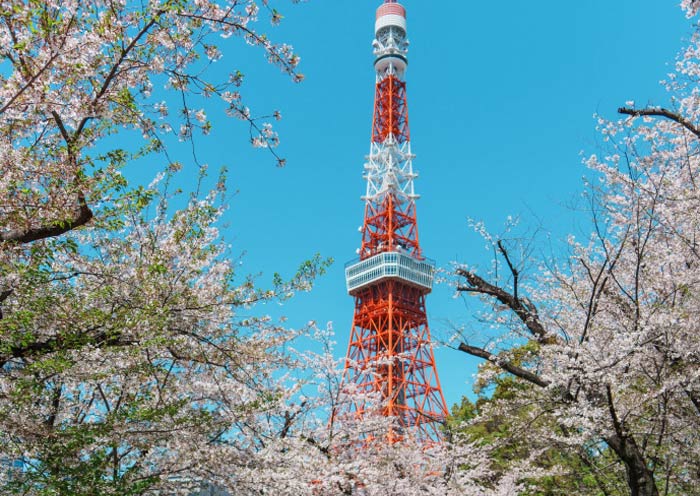
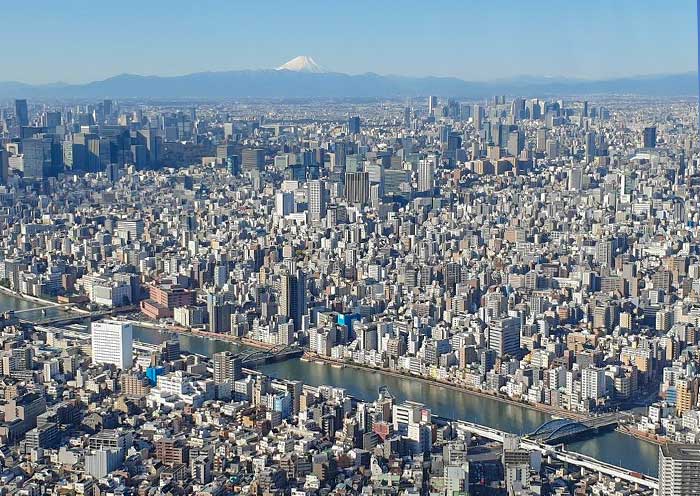
Full day explore Tokyo. You will visit Ueno Park and Zoo, Senso-ji Temple (a Buddhism Temple;), Akihabara (The Electric Town) & Tsukiji Fish Market.
In the morning head to Ueno Park. It is one of the city's largest parks and one of Japan's most famous cherry blossom viewing spots, boasting over 1,300 cherry trees. The cherry blossoms bloom every spring, especially in early April, creating a breathtaking spectacle of falling cherry petals carried by the wind. A visit to Ueno Zoo is a highlight for kids. The zoo is home to a variety of animals, including its famous giant pandas. With beautifully landscaped areas and family-friendly exhibits, it’s a delightful experience for children and adults alike.
Then, head to Senso-ji Temple (Asakusa Kannon Temple), a must-visit for anyone traveling to Tokyo. Here, you can experience the heart of old Tokyo and its vibrant atmosphere. You can take photos that frame Senso-ji Temple & the Tokyo Skytree (Japan's Tallest Tower; 634 meters) together.
Senso-ji Temple was built in 628 AD and has a history of over 1,300 years, making it one of Japan's oldest temples. It not only witnesses Japan's historical changes but also carries a rich Buddhist culture. The architectural style of Senso-ji Temple blends Japanese traditional culture and art, with rich colors and exquisite carvings. The main buildings include the main gate (Kaminarimon; a landmark of Tokyo), the bell tower, the Five-story Pagoda (a landmark of Tokyo), and the main hall, all reflecting ancient Japanese architectural style and religious beliefs.
Kaminarimon is the iconic structure of Senso-ji Temple, towering at 11.7 meters high and 21.7 meters wide, truly spectacular. Giant red lanterns hang in front of the gate, with the words "Kaminarimon" prominently displayed. Kaminarimon is not only a symbol of Senso-ji Temple but also one of Tokyo's most famous landmarks. You may have seen the work of Utagawa Hiroshige, one of the "Three Greats of Ukiyo-e," in his piece "One Hundred Famous Views of Edo: Asakusa Kaminarimon," depicting a snowy scene of the Kaminarimon gate, celebrated for its delicate portrayal and profound imagery, becoming a masterpiece of Ukiyo-e art. The area is bustling, and crowded with people coming to pray and seek blessings for health, peace, and happiness. Around Senso-ji Temple, you can taste various Japanese cuisines, purchase unique souvenirs, and participate in various celebratory activities.
After that, you can explore Akihabara (The Electric Town). Akihabara is a district in Tokyo renowned as the center of anime, manga, video games, and electronics. It's a paradise for tech enthusiasts, you'll find countless stores selling anime merchandise, computer parts, and electronics. On the streets of Akihabara, you can see various cosplay enthusiasts showcasing and interacting while dressed in costumes of their favorite anime or game characters.
You can also visit Tsukiji Fish Market. It was once the world's largest fish market, famous for its tuna auctions. However, in 2018, it relocated to a new, larger facility called Toyosu Market. You can still enjoy fresh seafood (sashimi, sushi, or seafood rice bowls), purchase kitchenware, and learn about a variety of seafood, including the characteristics, cooking methods, and nutritional value of different types of seafood.
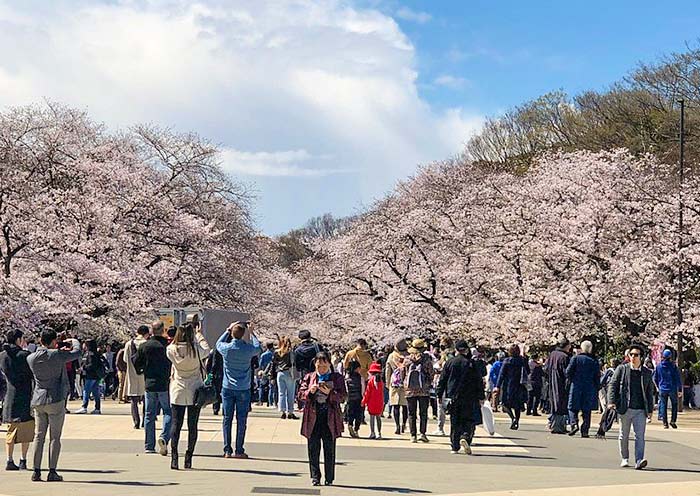
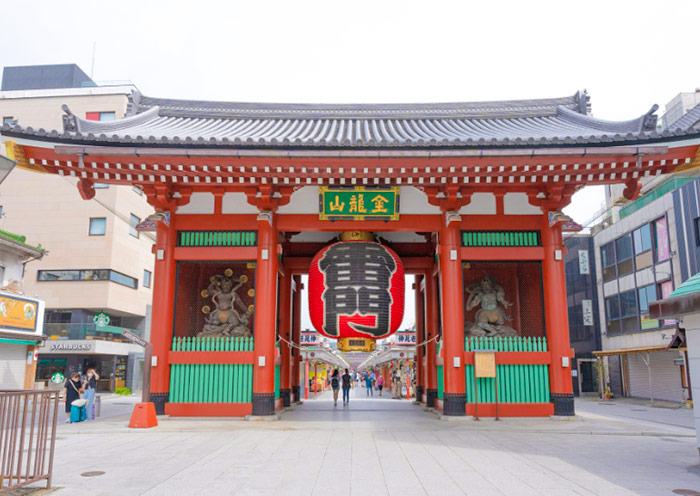

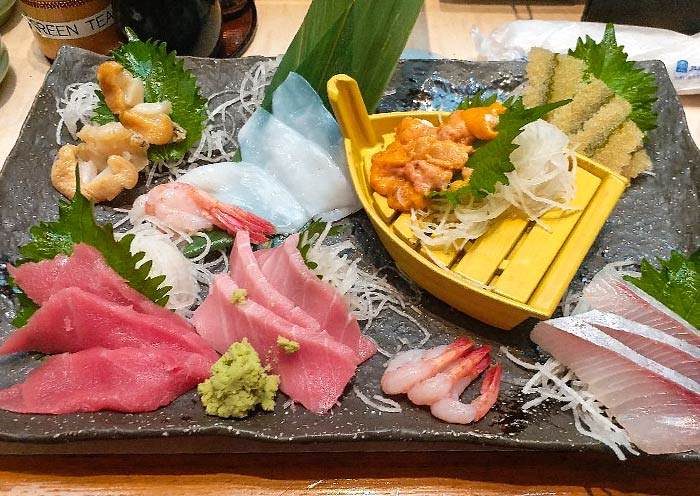
Enjoy your free day in Tokyo Disneyland or DisneySea.
Note: Today we only include transfer service. If you need assistance with ticket booking, please consult with our travel advisor.
Tokyo Disneyland seamlessly blends Western Disney magic with traditional Japanese elements, creating a harmonious and captivating experience. Tokyo Disneyland is renowned for its impeccable attention to detail, from the architecture to the character interactions. Many attractions are exclusive to Tokyo Disneyland, offering a fresh perspective on beloved Disney stories. The park's exceptional customer service is legendary, making guests feel welcomed and cared for. Beyond attractions, Tokyo Disneyland offers captivating parades, enchanting shows, and unforgettable character meet-and-greets throughout the day.
Tokyo Disneyland’s themed lands:
World Bazaar: The main entrance area with shops and restaurants.
Adventureland: Explore exotic lands and embark on thrilling adventures.
Westernland: Experience the Wild West with cowboys, outlaws & exciting attractions.
Fantasyland: Immerse in classic Disney fairy tales & meet beloved characters.
Tomorrowland: Wonders of the future with futuristic attractions & technology.
Critter Country: Enjoy the outdoors and encounter playful animals.
Must-see attractions of Tokyo Disneyland:
Cinderella Castle: The iconic centerpiece of the park, offering a magical atmosphere.
Space Mountain: A thrilling roller coaster experience through space.
Jungle Cruise: A humorous boat ride through a jungle filled with exotic animals.
Haunted Mansion: A spooky and entertaining haunted house attraction.
It's a Small World: A cheerful boat ride featuring dolls from around the world.
Alternatively, you can choose to explore Tokyo DisneySea. DisneySea is themed around the sea and water, offering a refreshing and immersive experience unlike any other Disney park. From high-speed roller coasters to gentle boat rides, DisneySea offers a diverse range of attractions to suit all tastes. You can also enjoy a wide variety of culinary delights, from classic Disney treats to unique Japanese-inspired dishes. You can explore Tokyo DisneySea's 7 themed ports: Mediterranean Harbor, American Waterfront, Port Discovery, Mermaid Lagoon, Arabian Coast, Lost River Delta, and Mysterious Island. The Must-see attractions include Journey to the Center of the Earth, Indiana Jones Adventure, Toy Story Mania, Soarin', Around the World, and Big Thunder Mountain Railroad.
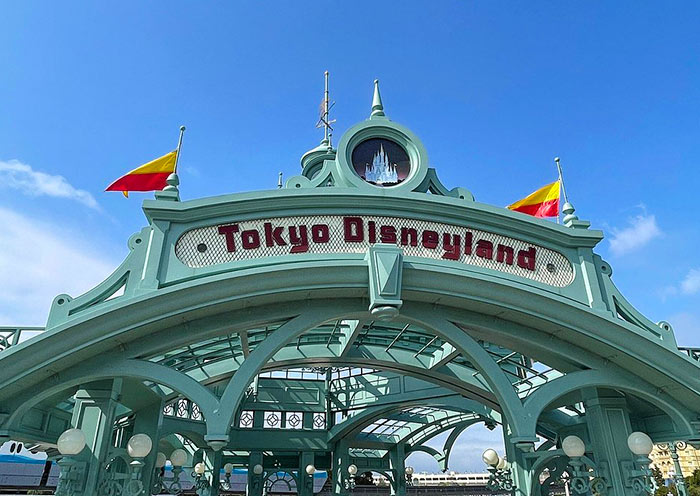
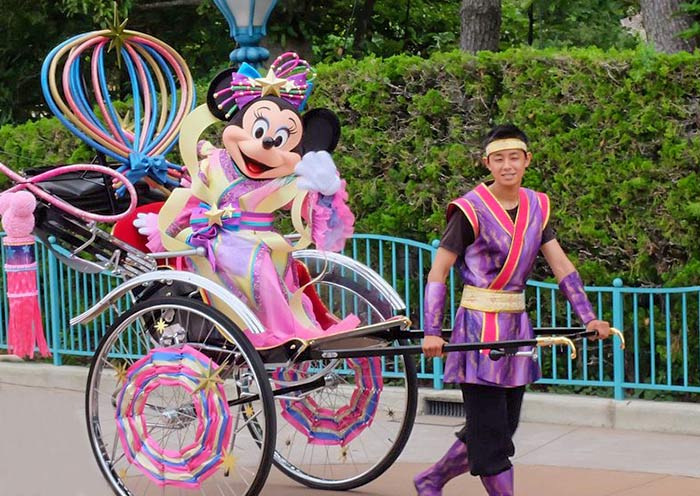
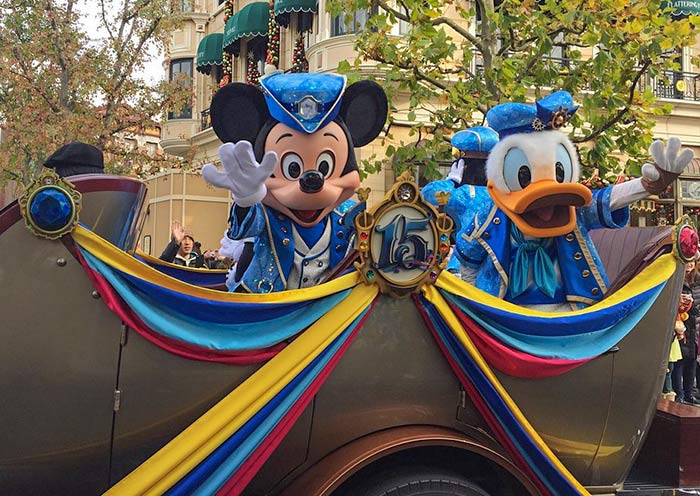
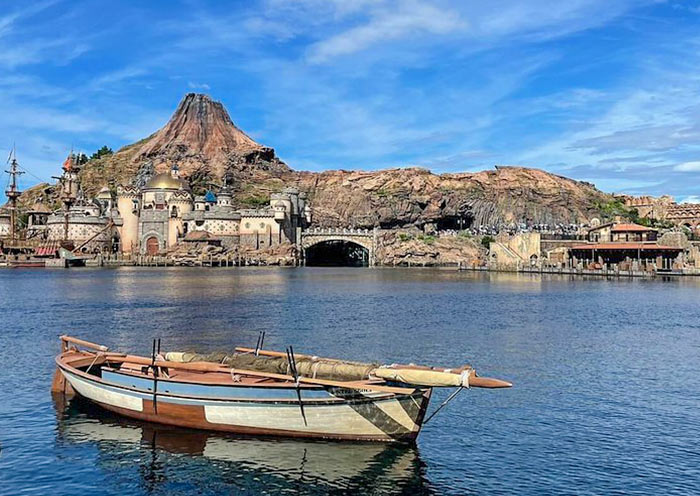
Today, it will be a full-day round trip (300 km) to admire the breathtaking views of Mount Fuji from the Mount Fuji 5th Station, Lake Yamanaka.
Mount Fuji is the tallest mountain in Japan. It's a famous volcano with a perfectly symmetrical cone shape. Visiting Mount Fuji is essential for any traveler in Japan. As a UNESCO World Heritage Site, Mount Fuji (3,776 m) stands as an iconic symbol of Japan, a cultural and spiritual landmark (recognized as a holy mountain in Shintoism), and a natural marvel. When picturing Mount Fuji, its distinctive perfect cone shape and snow-capped peak likely come to mind. Among the most renowned depictions is Katsushika Hokusai's 'Thirty-Six Views of Mount Fuji'. Hokusai, one of the "Three Greats of Ukiyo-e," is best known for his masterpiece "The Great Wave off Kanagawa."
Start your journey to Mount Fuji 5th Station (3 hours,130 km) for a close-up Mount Fuji view. It offers breathtaking panoramic views of Mount Fuji (if weather permits) and the surrounding area, including the Fuji Five Lakes. For those adventurous enough, the 5th Station is the starting point for climbing Mount Fuji. Experience the unique alpine environment and the thrill of being so close to Japan's iconic mountain.
Then, head to Lake Yamanaka. Lake Yamanaka is the largest of the five Fuji Five Lakes and offers breathtaking views of Mount Fuji, making it a perfect destination for nature enthusiasts. Lake Yamanaka is a paradise for water sports. Activities like boating, fishing, water skiing, and windsurfing are all available on the lake, providing plenty of opportunities for adventure on the water.
For an exciting and unique experience, hop aboard the KABA Bus. The KABA Bus is not just a regular bus, but also a ship. This amphibious vehicle, named after the "hippo" - a king of animals that lives both on land and in the water- offers a thrilling ride. You can drive along the scenic roads around Lake Yamanaka, and then transition into the water for an exhilarating boat ride. As the bus moves from land to water, you'll enjoy a scenic cruise across the lake, with panoramic views of Mount Fuji and the surrounding landscape, making it a truly unforgettable adventure.
In certain seasons, visitors have the unique opportunity to feed the swans, a delightful activity for both adults and children.
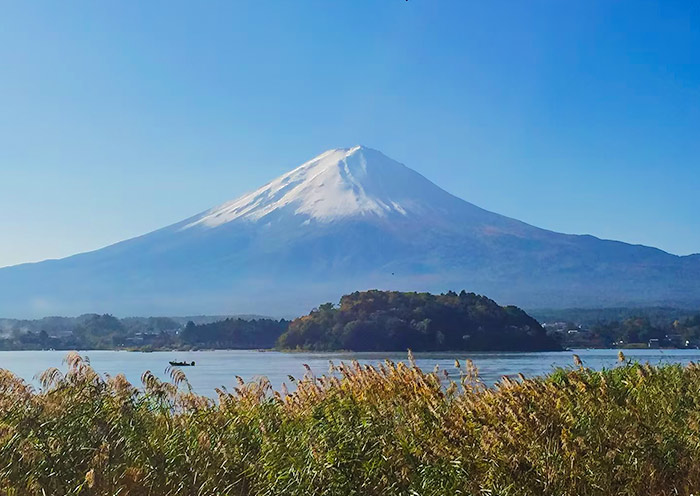
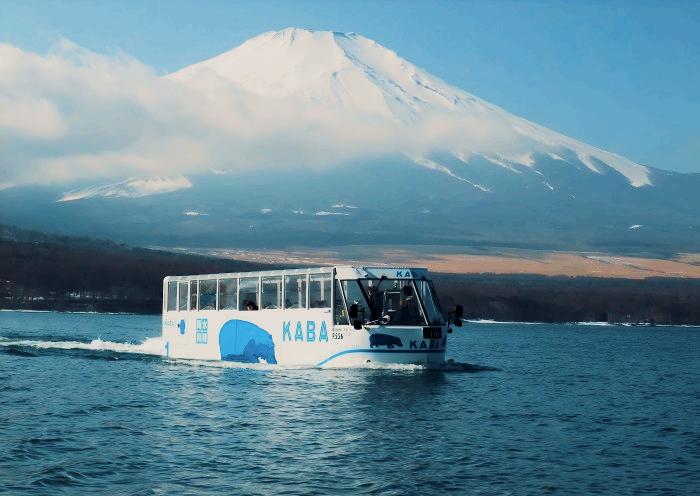
Today, you will take the Shinkansen (Bullet Train) to Nagoya from Tokyo Station. A driver will wait for you at the hotel entrance at the scheduled time and transport you to Tokyo Station.
Shinkansen Ride: At Tokyo Station, board the Shinkansen (Bullet Train) bound for Nagoya Station (about 2.5 hours). This fast and comfortable journey offers a chance to enjoy the changing landscapes of urban and rural Japan. Tokyo Station, a prominent feature on the ¥10,000 Japanese banknote, is more than just a transportation hub, it is a historical landmark and a vibrant destination in its own right. As the main gateway to the city, Tokyo Station has played a crucial role in Japan's modernization and economic development. Its impressive red-brick facade and intricate details are a testament to Japanese architectural prowess. The station has become a symbol of Tokyo and a popular tourist attraction.
Upon arrival in Nagoya, your driver will greet you and transfer you to either Legoland Japan or Ghibli Park, based on your family's pick.
As a LEGO fan, a visit to LEGOLAND Japan is a must. As the country’s only LEGO theme park, it's considered one of Japan’s three major international parks, alongside Tokyo Disney and Universal Studios Osaka.
Every attraction is centered around the iconic LEGO brick, with all rides—from mini roller coasters to rafting adventures—designed with a LEGO theme. You'll also find amazing LEGO recreations of famous Japanese landmarks. It’s the perfect place for kids to play and interact freely.
Alternatively, you can head to Ghibli Park, a beloved destination for both adults and children, located just outside the city center.
Ghibli Park is the world’s first and only theme park dedicated to the animated worlds of Studio Ghibli. It offers a truly unique experience. While there are no thrilling rides, the park perfectly recreates classic scenes from films like Spirited Away, My Neighbor Totoro, Castle in the Sky, and Howl's Moving Castle. You can step right into the films' details, surrounded by original drawings, intricate models, and interactive exhibits. It's the perfect place to take countless photos with your family.
P.S. If you need assistance with ticket booking, please contact us at least two months in advance.
Stay overnight in Nagoya.

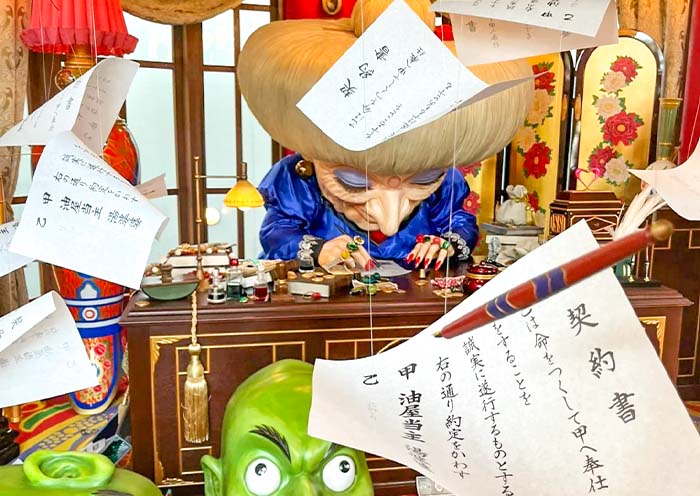
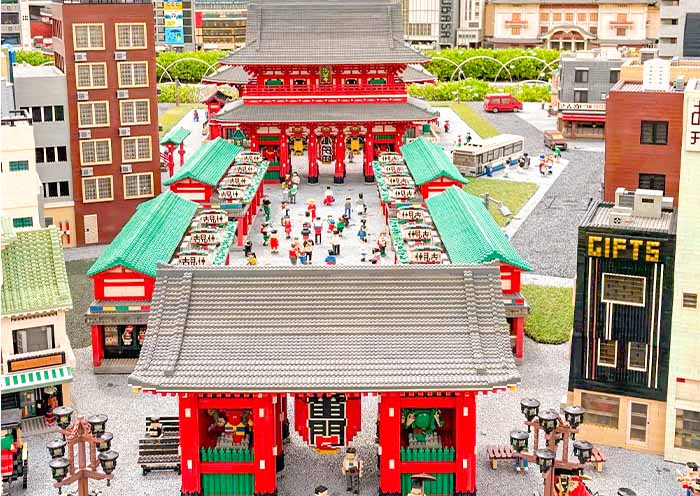
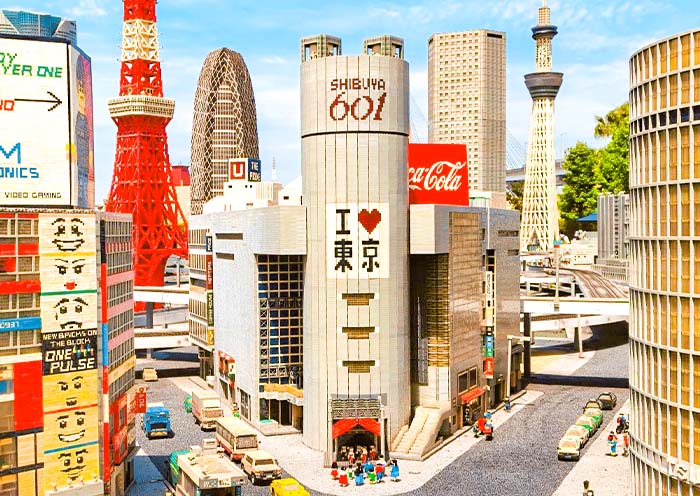
After breakfast, your driver will transfer you to Takayama by a 2.5-hour car ride. You'll then check in to your hotel in Takayama. Takayama, during the Edo period, was known as "Hida Province," and Takayama earned the nickname "Little Kyoto of Hida." From a distance, it appears as a tranquil, ancient cultural town nestled in a mountainous region.
First, visit Sanmachi Suji District, heart of Little Kyoto in Takayama. It is the city's most iconic historic district. Its three ancient streets—Ichinomachi, Ninomachi, and Sannomachi—have preserved the essence of the Edo to Meiji periods. As you stroll, you'll admire buildings that still retain their original charm: black wooden exteriors, lattice windows, and noren curtains hanging under the eaves.
Take your time to wander and savor Hida beef (Self Pay), which melts in your mouth and rivals Kobe. Sake breweries, sweet shops, and more to check. This area isn't crowded. The ordinary people have lived here for generations. With blue sky overhead and black wooden houses below, you'll be gazing at the same timeless scenery as ancient Japanese people.
Then, 4 minutes walk to Takayama Jinya, the only surviving Edo-period magistrate's office in Japan. Established in 1615, this former Tokugawa Shogunate administrative center for Hida integrated offices, storehouses, a courtroom, and courtyards. Get inside, it's fascinating to observe the wooden structures, bamboo torture instruments, and even exposed nails crafted into rabbit patterns.
Back at Yoshijima Traditional House in Sanmachi Suji District, this representative private residence dates back to the early 19th century. Once home to wealthy merchants, its design is aesthetically meticulous. Inside, the 12-meter high atrium and tall windows soften the light, creating changing shadows throughout the day.Relax indoors for photos or enjoy the beautiful garden view.
Conclude your day at Takayama Matsuri Yatai Kaikan, a dedicated hall showcasing the festival's magnificent, full-sized floats. Lavishly decorated with gold leaf and intricate carvings, you can also admire elements like puppets and kabuki. Four unique floats rotate every four months. It’s a great way to experience them even if you miss the Spring or Autumn festivals.
After the tour, stay at a hotel in Takayama.
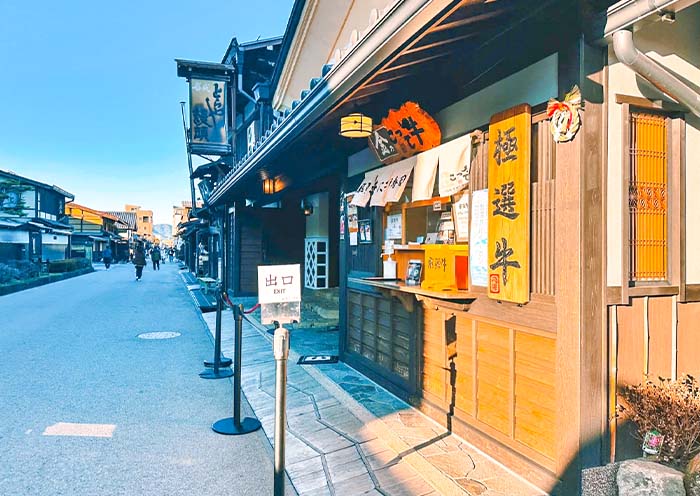
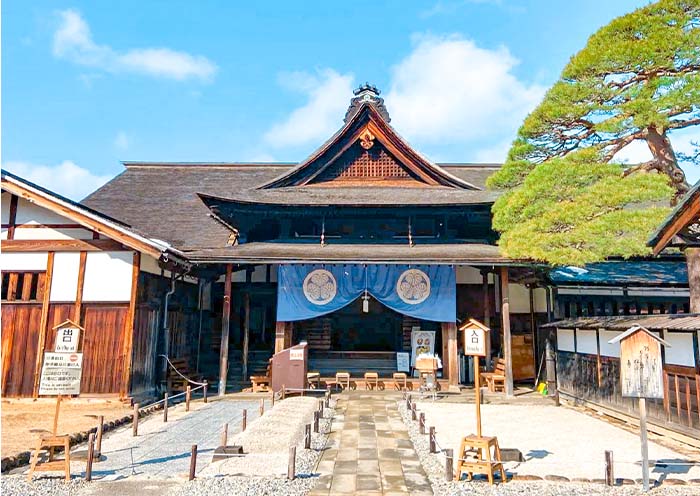


Start your morning at 300-year-old Miyagawa Morning Market, one of Japan's three great morning markets. Join locals as they begin their day. This traditional market stretches for about 350 meters along the riverside, featuring over 60 stalls. It's hard to attend this kind of traditional Japanese markets as many others gradually disappear. You can leisurely browse local fruits and vegetables, pickles, crafts, and snacks. Feel the warmth and vibrancy!
Next, enjoy a memorable Japanese home cooking experience (Harvest Gochisousama Cooking Lesson) with your family. You'll get fresh ingredients from the morning market and cook a variety of modern Japanese dishes together, such as sushi, miso soup, and other home-style meals. Get hands-on. The delicious taste will create lasting memories.
Then, leave Takayama and take a 1-hour car ride to Shirakawa-go. Spend the rest time in Japanese traditional village.
Shirakawa-go, famous for its large collection of preserved 17th-century Gassho-zukuri farmhouses, has been a renowned UNESCO World Heritage site since 1995, celebrated for its untouched natural beauty. The thatched roofs of these traditional houses are steeply pitched at a 60-degree angle, resembling hands clasped in prayer—hence the name "Gassho-zukuri" (praying hands construction). Local residents developed this three-story design to withstand heavy snow. The lower floors are for living, while upper levels for storing hay or raising silkworms.
This pristine village shows a clear, beautiful scene that seems to keep worries at bay. Each season offers unique charm, but winter is especially breathtaking. Thick snow blankets the roofs and fields, making the entire village appear like a winding white river flowing through the valley, serene and pure.
Beyond admiring the village from outside, you can visit Wada House, the headman's residence, to check the interior of a Gassho-zukuri home. It's the largest Gassho-zukuri house in the village and offers the best views. The ancient thatched roof keeps the interior warm in winter and cool in summer. As you ascend the stairs, the upper floors display traditional farming tools and old photos of daily life and silkworm farming. From the windows, the mountains and village seem almost within reach.
After exploring the Wada House, head to Ogimachi Castle Observation Deck, the best spot to overlook the entire Shirakawa-go village. A view will likely inspire you to take countless photos.
After the tour, drive 1 hour to Kanazawa for hotel check-in. Kanazawa, a key cultural city in Japan's Hokuriku region, is often called "Little Kyoto." It's famous for its well-kept Edo-era samurai history, beautiful traditional crafts, stunning gardens, Gold Leaf, and its charming, classic "Little Kyoto" feel. Get a good night's sleep. Tomorrow's sights are close together and won't be crowded.
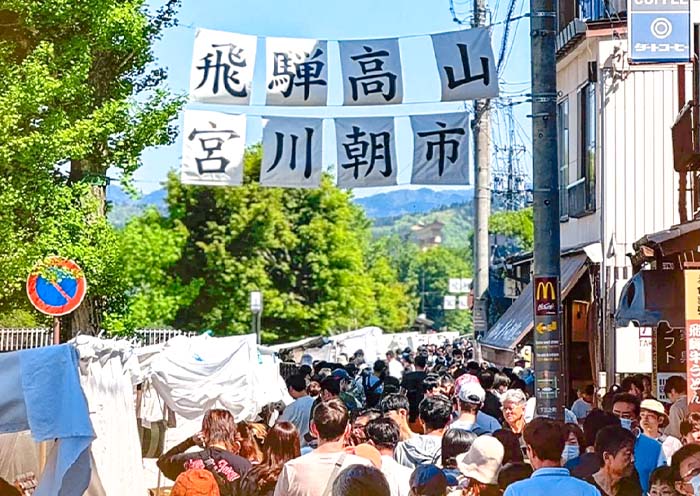



Take a whole day in Kanazawa for its traditional Japanese garden, castle, samurai culture, and golden leaf artisan DIY.
First, explore Kenroku-en, Kanazawa's iconic garden and one of Japan's top three. It shows off the best of Japanese garden art. This garden, built in the 1600s by the Maeda noble family and opened publicly in 1871, blends spaciousness, tranquility, artistry, ancient vibes, water features, and great views along its winding paths. Photographer would love every season, with spring's cherry blossoms and winter's yukitsuri (snow-draped trees) being their best model.
Inside through Mayumizaka Gate, the biggest highlight is Kasumigaike Pond, where you'll find famous Kotojitoro Lantern with one leg in water, one leg on bank. Nearby is unique Neagari-no-Matsu (Root-lifting Pine), with its roots impressively exposed. And, rest at Shigure-tei Tea House, a former noble resting spot, where you can enjoy matcha and sweets. Look back, stunning garden views pour in through its open doors.
Second, head to opposite Kanazawa Castle Park, Kanazawa's historical center. This expansive park encompasses famous Kanazawa Castle, once home to the Maeda family, powerful Edo-period feudal lords. The relics still echoes grandeur of rulers from centuries past.
You will explore key areas like the Hishi Yagura (a rhomboid-shaped watchtower showcasing castle's defense layout and wooden construction techniques), the Gojukken Nagaya (a 90-meter long armory and soldiers' barracks). This is your place to glimpse Edo-era castle and samurai.
Got a satisfying meal, then, drive to Nagamachi Samurai District. It’s a precious relic of Japan's samurai culture, a core district where upper-ranking Edo-period samurai. Its narrow, rustic streets are lined with shoulder-high earthen walls and wooden buildings. The Nomura House exemplifies samurai life. Here, the house, pond, tree, stone lantern meet in perfect embrace. Sit, listen, or view from the second-floor tea room. An ideal spot to revitalize energy.
Next, explore Higashi Chaya District, Kanazawa's iconic old street often compared to Kyoto's Gion. Built in the 1800s, this area once hosted samurai enjoying tea and geisha performances, and over 20 original Edo-era buildings still line. You can experience Edo-period high society at Shima Teahouse with tea and sweets, and be sure to try gold leaf ice cream. Finish your day at a Gold Leaf Workshop for a fun DIY project. Gold Leaf always ranks No. 1 when it comes to Kanazawa's specialty. Give it a try. You'll pick a mirror or chopsticks, mask it under the helpful of instructors. Create your golden art.
After the tour, take 2 hours train to Kyoto for hotel check-in.
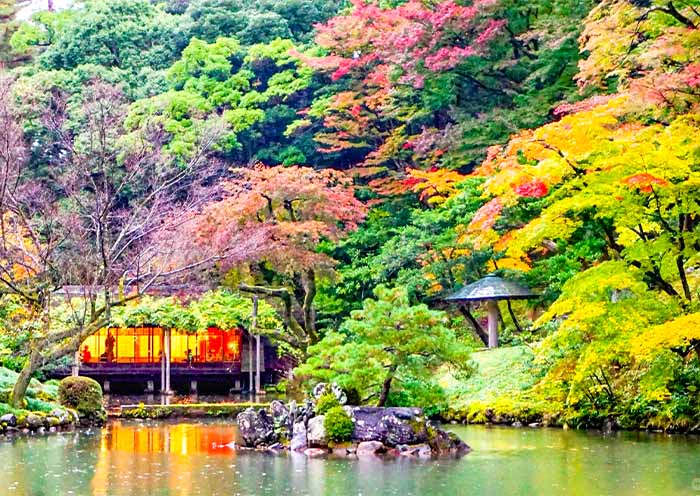
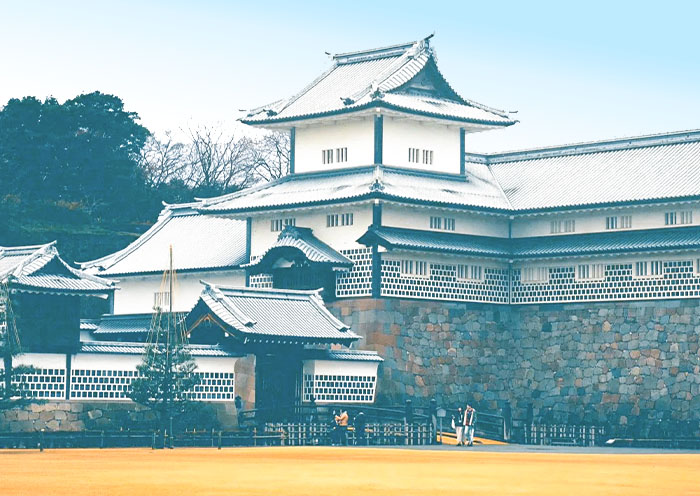

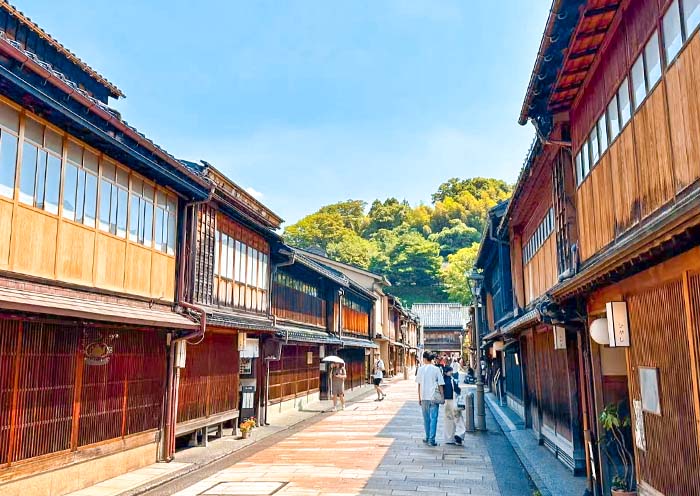
Today, you will experience the rich culture and history of Kyoto, from its ancient temples, shrines, and castles to its vibrant market and traditional district.
Start your day with a visit to one of Kyoto's most iconic sights, Kinkakuji Temple (Golden Pavilion) - a UNESCO World Heritage site. This Zen Buddhist temple is famous for its stunning golden exterior. The temple's stunning visual appeal comes from its top two floors, which are completely covered in gold leaf. The reflection of the golden structure shimmering in the pond in front of it, making it perfect for photos and quiet reflection. It was originally built in 1397 as a retirement villa for Shogun Ashikaga Yoshimitsu. After Yoshimitsu's death, as per his will, the villa was converted into a Zen temple by his son.
Next, make your way to Nishiki Market, often called "Kyoto’s Kitchen." This vibrant market is the perfect place to sample a variety of local dishes, such as cute Japanese sweets wasabi salt, fresh sashimi skewers to tako tamago (small octopus head stuffed with a quail egg on a stick). Enjoy browsing through the stalls and trying different Kyoto delicacies.
After lunch, head to Gion, Kyoto's famous geisha district. Here, you might catch a glimpse of Geisha (Geiko) in their elaborate kimonos and traditional makeup. As you wander through the cobblestone streets of Gion, take a moment to appreciate the beautifully preserved machiya (wooden townhouses), ochaya (teahouses), and exclusive ryotei (traditional Japanese restaurants).
From Gion, a short walk will bring you to Yasaka Shrine, the guardian shrine of the Gion entertainment district, which dates back over 1350 years. Yasaka Shrine is particularly favored by those seeking beauty and wealth. Visiting this significant Shinto shrine in Kyoto, you may also find yourself gaining some good luck. The shrine is most famous for its Gion Matsuri in July, during which you can witness the procession where the deities of Yasaka are paraded through the city streets.
Then, walk up the well-preserved streets of Ninenzaka and Sannenzaka towards Kiyomizu-dera Temple. These charming, sloping streets are lined with traditional shops and quaint tea houses, offering a nostalgic glimpse into Kyoto's past. As you stroll through these areas, you can shop for unique crafts, sample local snacks, and perhaps stop at a café to relax and soak in the atmosphere of old Kyoto.
Your day culminates with a visit to Kiyomizudera Temple, another UNESCO World Heritage Site. Perched on the hillside of Eastern Kyoto, this temple is renowned for its wooden stage that juts out over the hill, providing stunning views of the city and the surrounding nature. The temple's main hall, constructed entirely without the use of nails, is an architectural marvel. Kiyomizu-dera is also celebrated for its sacred waters, which are believed to have wish-granting powers that draw countless visitors who come to drink from its stream. Don’t miss the Hondo (Main Hall), Jishu Shrine, the Otowa Waterfall, and the spiritual experience of the Tainai-Meguri room.
Tips: The scenery at Kiyomizudera Temple is distinctively beautiful in each season, offering a unique charm year-round. In spring, the mountains are adorned with charming cherry blossoms; in summer, they are lush with vibrant greenery; in autumn, they are decorated with brilliantly colored leaves; and in winter, they are filled with enchanting trees.
Stay overnight in Kyoto.
Optional Activities:
- Join a geisha tea ceremony in Kyoto.It offers a chance to see a performance by a geisha, experience the tea ceremony, and learn all about its artful rituals.
- Kyoto traditional kimono experience.Wear a traditional kimono and stroll through scenic districts like Gion or around Kiyomizu-Dera Temple. Enjoy photo opportunities and the feel of traditional Japan.
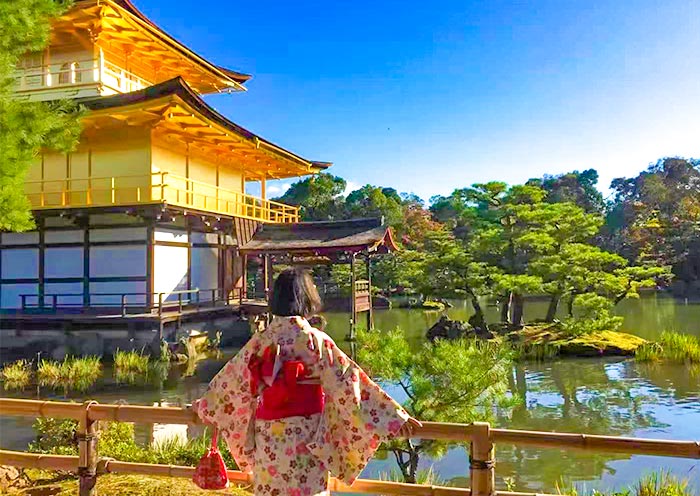

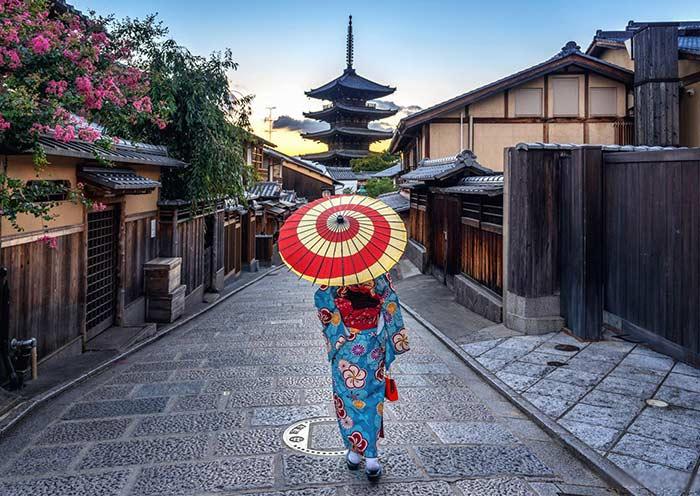

Start morning in Kyoto bright and early at one of its most iconic sites - the Fushimi Inari-taisha Shrine to beat the crowds.
Fushimi Inari Taisha Shrine is famous for its thousands of vermilion torii gates, known as Senbon Torii (“thousands of torii gates”). Layers upon layers of vermilion torii gates line the lush, wooded hillside, forming a seemingly endless corridor. The vibrant orange and black gates contrast beautifully with the surrounding greenery, creating a visually stunning and almost otherworldly path that is highly photogenic.
Fushimi Inari Taisha was founded in the early 8th century (711 AD) and is primarily dedicated to Inari, the Shinto god of rice, fertility, sake, agriculture, and industry. As you explore the shrine, you will encounter hundreds of fox statues. Said to be the messengers of the god Inari, who is associated with cereal grains, these fox statues often symbolize the deity. Many of these fox statues are depicted holding a key in their mouths, which is said to open the granary.
Tips: Hiking to the summit of the mountain and back will take two to three hours, but many people go only as far as the Yotsutsuji intersection because there are fewer torii gates beyond this point. It will take 30 to 40 minutes to reach Yotsutsuji.
Depart from Kyoto and head to Nara, an approximately 1.5-hour car car ride. Nara holds a special place in Japanese history as the country's first permanent capital, predating Kyoto. Nara boasts eight World Cultural Heritage sites, making it Japan's second most culturally rich city after Kyoto.
Walk to Nara Park, adjacent to Kasuga Taisha. This park is famous for its hundreds of freely roaming deer, considered messengers of the gods in Shinto tradition. Purchase some shika senbei (deer crackers) to feed the deer as you stroll through the park.
After the tour, drive to Osaka (typically takes around 45 minutes to an hour). In the afternoon, you will experience the unique charm of the city through a street food and shopping tour. Enjoy shopping at Shinsaibashi-suji Shopping Street, Osaka's busiest shopping arcade. Then, head to the lively district of Dotonbori, where waterways are lined with luminous advertisements and signs. It's especially glitzy during the holiday season, with decorations strung across the bridges. Full of fantastic restaurants, clubs, and karaoke bars, it's the city's go-to area for entertainment. Take a photo at the iconic Glico Man sign. Try takoyaki, ball-shaped octopus bites, kushikatsu (Japanese deep-fried skewered meat and vegetables), and okonomiyaki, a savory Japanese pancake topped with whatever you like.
Optional Activities:
Kamigata Ukiyoe Museum offers a fascinating glimpse into the traditional Japanese art form of ukiyo-e.
Shinsekai (New World) & Tsutenkaku Tower: Shinsekai, meaning "New World," is a nostalgic and unique shopping district in Osaka, known for its retro vibe, old-school charm, and vibrant atmosphere. Originally built in 1912, Tsutenkaku Tower offers views of the Osaka skyline and is located in the retro-themed Shinsekai area.
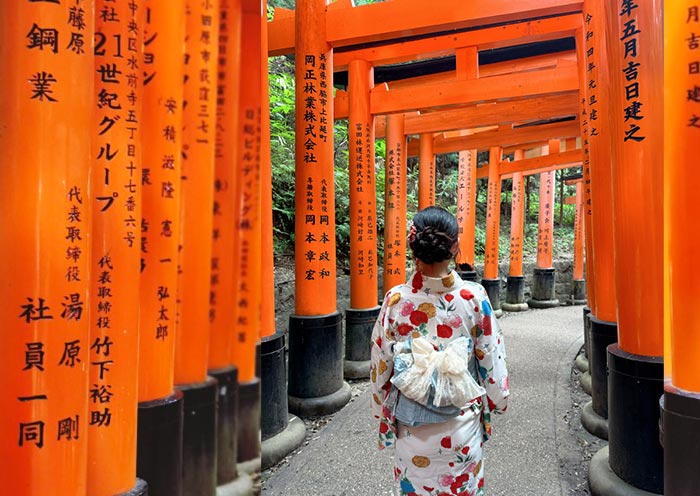
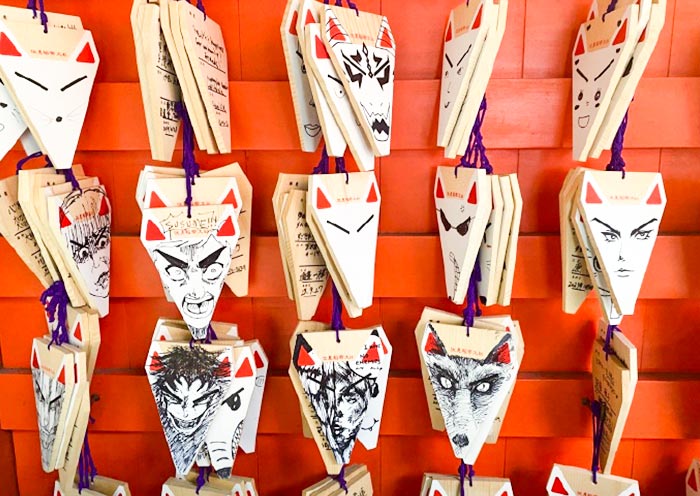
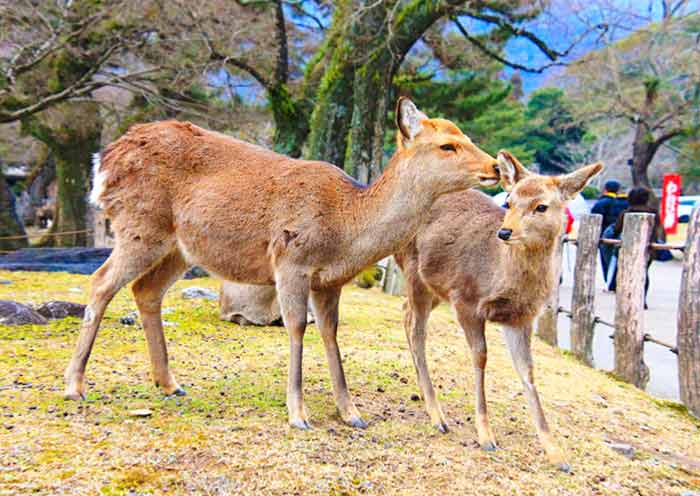
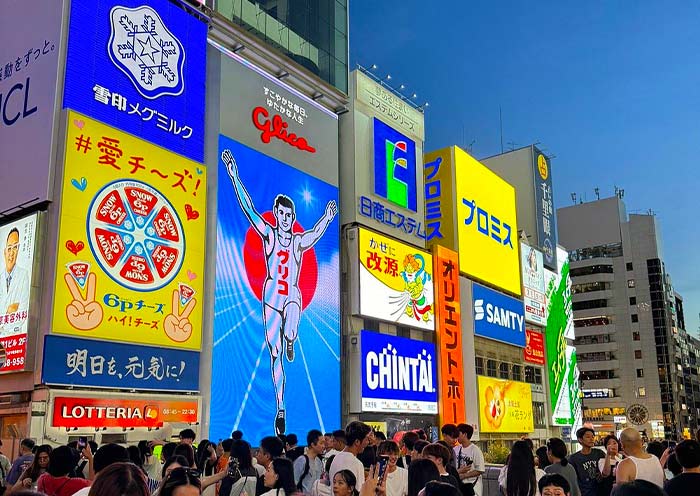
You can enjoy a free day at Universal Studios Japan (USJ) on your own, one of the premier theme parks in Asia.
Note: Today we only include transfer service. If you need assistance with ticket booking, please consult with our travel advisor.
Universal Studios Japan offers a diverse range of themed areas such as The Wizarding World of Harry Potter, Super Nintendo World, and Jurassic Park, among others. Each zone provides unique rides, interactive experiences, and entertainment that can captivate visitors of all ages. Whether you're battling alongside Harry Potter, racing with Mario, or escaping a ferocious dinosaur, USJ provides an immersive experience that combines cutting-edge technology with your favorite fictional worlds.
Get ready to create unforgettable memories at Universal Studios Japan, where excitement and magic await you at every turn!
Stay overnight in Osaka.


It is time to end your 12 Days Japan Tour for Family. You will have some free time in Japan to explore further on your own until your driver escorts you to the airport for your flight to your next destination.
If you prefer to travel longer in Japan, you can extend your Japan Trip to other highlighted parts of Japan, such as Hiroshima, Hokkaido, etc.
Thank you for choosing Asia Odyssey Travel (AOT) for your Asia Tour. We are always here working for you and hope to see you again on your next trip to Asia. Safe journey!
What’s Included & What’s Excluded
What's Included:
What's Excluded:
Important Travel Tips for Visiting Japan
Get the right visa. Depending on your nationality and the length of your stay, you may need to apply for a visa in advance. You can do this online or at a Japanese embassy or consulate. Many countries are part of Japan’s visa exemption program, allowing their citizens to enter Japan for short stays without a visa for tourism. Always check if your country is on this list before applying for a visa. If you have any questions, feel free to contact our travel experts for more information.
The best time to visit Japan depends on your interests:
Spring (March to May): Ideal
for witnessing the cherry blossoms and enjoying mild weather. Major cities like Tokyo, Kyoto, and Hiroshima
are particularly beautiful as cherry trees bloom spectacularly.
Summer (June to
August): Perfect for experiencing vibrant festivals such as Gion Matsuri in Kyoto,
Tanabata Matsuri across the country, and enjoying the natural beauty of Hokkaido, which is less humid than
the rest of Japan. Note that early summer (June) is the rainy season.
Autumn (September to
November): Offers stunning fall foliage, making it a great time for hiking and temple
visits. The weather is cool and pleasant, ideal for outdoor activities.
Winter (December to
February): The best time for winter sports, especially in regions like Hokkaido and the
Japanese Alps. Onsens (hot springs) are also a popular attraction during the cold months.
Bring Cash. Despite advances in digital payment, many smaller vendors, temples, and rural
areas operate predominantly with cash. It’s wise to keep some yen on hand at all
times.
Universal Travel Adapter. Japan uses 100V with two straight thin
pins.
Passport: Ensure it’s valid for at least six months beyond your date
of travel.
Visa (if required): Make sure you have the right visa for your
travel.
Travel Insurance Information: Always good to have on hand.
Bow when greeting: A slight bow is a common way to say hello, thank you, or
sorry.
Be mindful of your noise level: Japanese culture values quietness,
especially in public transportation and residential areas.
Follow the rules: Whether
it's waiting in line or adhering to signage, following local rules and etiquette is highly
valued.
Etiquette in temples and shrines: Wear modest clothing and follow specific
customs such as washing hands and mouth before entering a shrine or temple. Photography might be restricted
in sacred areas.
Looking for more travel guides for first-time visitors to Japan? Want to gather additional information to plan your trip? Our team of professional travel experts has written over 40 articles about Vietnam. Please check out ourJapan Travel Guide for inspiration and detailed insights.
Hotel Conditions for Your Japan Tour
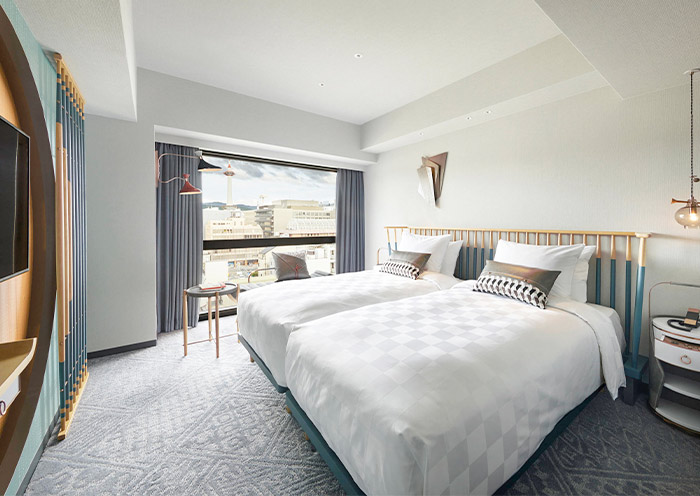


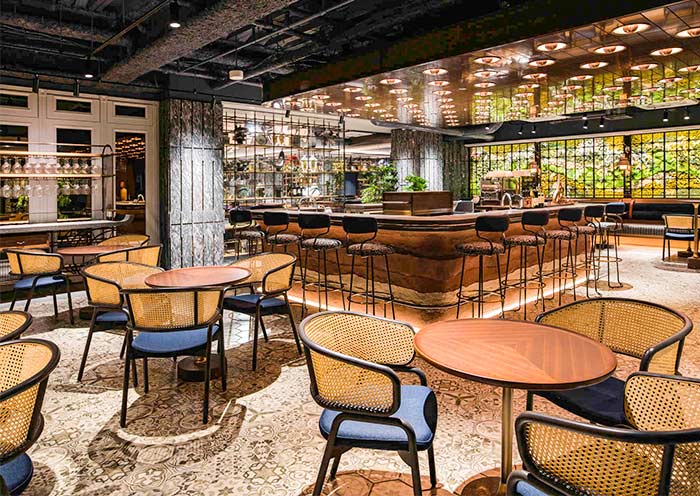
We offer a range of accommodation options to suit various preferences and budgets: luxurious 5-star hotels, comfortable 4-star hotels, and economical 3-star hotels. Our selected hotels are conveniently located close to the city center or popular tourist spots.
For those seeking a more distinctive lodging experience, we also offer Traditional Ryokans, Machiya, Onsen (hot springs) Hotels, etc. If you have specific needs or preferences, please consult with your travel advisor.
Tips: Be aware that hotel room sizes in Japan may be smaller compared to those in other developed countries due to the scarcity of land. If your budget allows, it is recommended to opt for a higher category of hotel, which will generally offer more comfort.
Photo Gallery for This Itinerary
Latest Japan Tours Reviews from Our Customers

Jess
Malaysia
Destination(s): Beijing, Xian, Shanghai, Zhangjiajie
Date of Experience: Sep 04, 2025
Tour Customized by: Yee
You May be Interested in This Tour: 26 Days In-Depth Vietnam China Japan Tour: Ultimate Asia Contrast

Claudia Konrado
Brazil
That’s when a friend recommended Asia Odyssey Travel (AOT), and it was the best decision we made! Not only did they completely customize our entire trip, but they did so at a perfectly reasonable cost. Our travel agent, Abby, was absolutely incredible. She worked tirelessly with us to build out an itinerary, patiently answering all our questions, offering guidance, making changes, and adding new ideas with such care and professionalism. From Disney and Universal for the teens to visits to TeamLab Planets, museums and temples and shopping excursions, ending with a relaxing beach time in Okinawa, Abby worked with us and ensured there was something wonderful for everyone. Even during the trip, she was always available to help and provide support. I truly can’t express how much Abby made a difference in our experience. The entire team at AOT, from the guides to the drivers, was consistently helpful and attentive, ensuring every moment of our journey was smooth and enjoyable. We are so grateful for the wonderful memories created, all thanks to the dedication and expertise of AOT team. We highly recommend them for an exceptional travel experience.
Date of Experience: Jul 01, 2025
Tour Customized by: Abby
You May be Interested in This Tour: Customized Tour

Cheers
Britain
I’m so glad we chose to do this tour! We were looking for a way to escape the summer heat, and Hokkaido was a dream come true. The air was so fresh and the scenery was just incredible—I swear my photos don’t even do it justice.
The highlight for me was definitely the lavender fields in Furano. They were even more beautiful in person than in all the pictures you see online. Our private guide knew the best spots to get a great view without fighting the crowds. Plus, we got to see all the other rainbow flower fields in Biei which were just as amazing.
The trip was super relaxing because we didn't have to worry about a thing. Our driver was so professional, and it was a huge relief to have a private car just for our family. It made getting between all the different towns so easy. We loved exploring the charming canal in Otaru and getting to eat all the fresh seafood in Sapporo. The food in Hokkaido is seriously on another level!
Date of Experience: Jun 10, 2025
Tour Customized by: Cheers
You May be Interested in This Tour: 8 Days Hokkaido Summer Tour: Colorful Family Vacation on Hokkaido Island
Price: From USD request pp
(Based on a private tour for 6 persons staying in 4-star hotels. Prices may vary depending on the itinerary, travel dates, and group size. )
(Book at least 6 months in advance)


